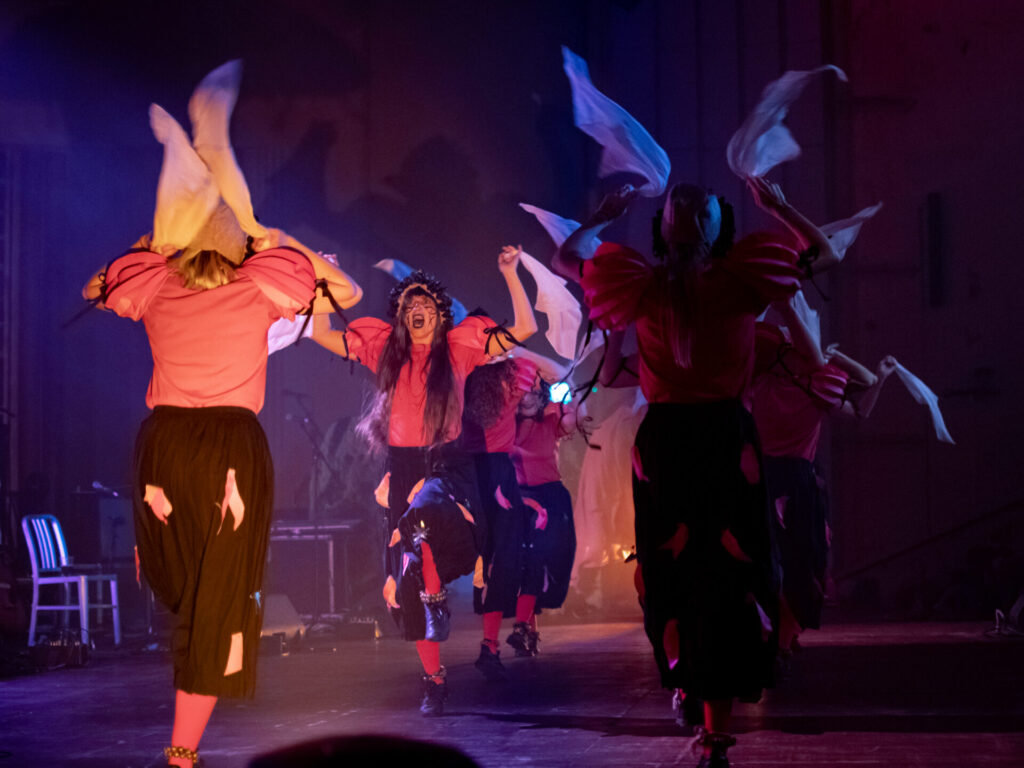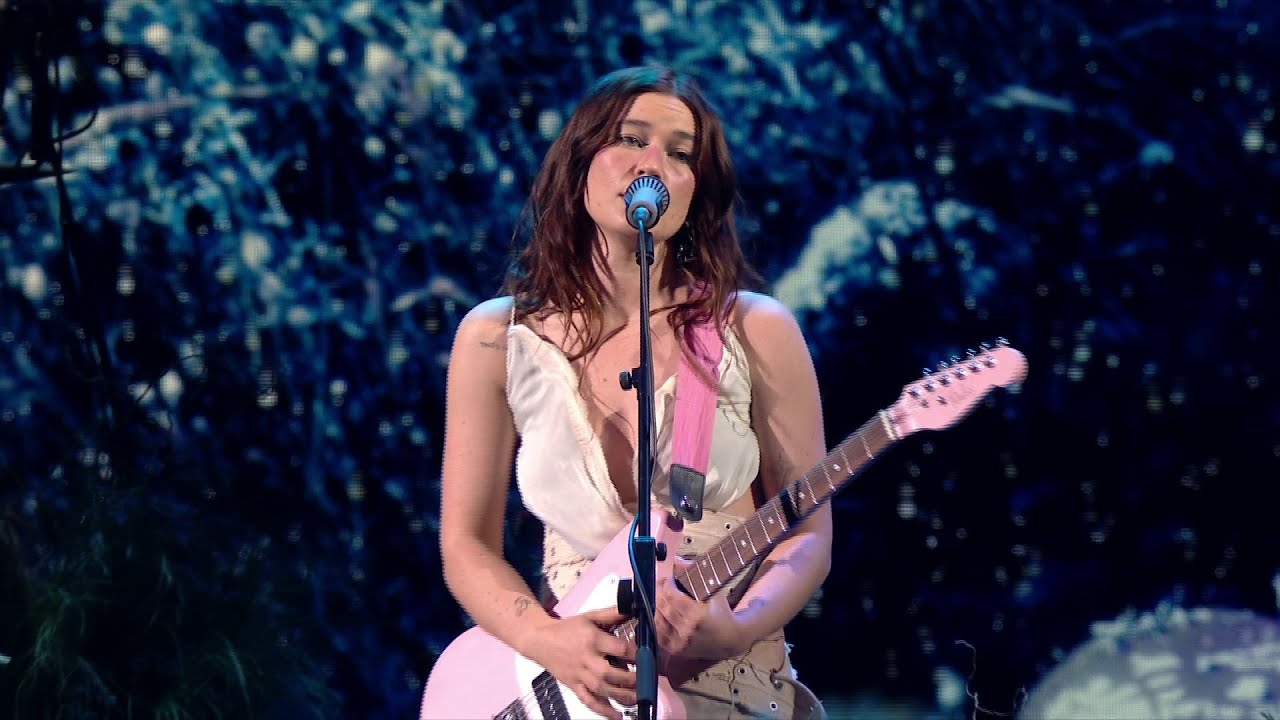Cecil Sharp spent the Christmas of 1899 unwell. Recuperating in a cottage on the outskirts of Oxford, the mental fug of the lingering illness must have intensified the strangeness of what he saw through the window: a procession of eight men, each carrying white handkerchiefs and coloured sticks, dressed all in white but decorated with colourful ribbons and pads of bells strapped to their shins. They lined up in two lines of three, and then a man dressed as a fool stepped up behind them. A concertina player launching into an upbeat tune was the cue for the men to leap high into the air and begin dancing. Sharp was enraptured. Within a second his illness dissipated, as if he’d been touched by the divine.
Sharp has since pointed to this encounter with the Headington Quarry Morris as the Damascene moment that transformed him from the principal of a private conservatoire to an obsessive folksong collector, and an instigator of what is now known as the first ‘folk revival’. As I have previously written in my Radical Traditional column, the way he and other upper-class collectors stratified traditions also led to the erasure of the working people who carried them. Nevertheless, there’s still something at the core of the story of Sharp’s Christmas miracle that resonates over a century later: the potential of morris dancing to enact such a dramatic response that it can shake a person to their core. In some cases, it can transform their life.
When I look back to the roots of my own interest in English folk, I realise that I, too, experienced a lightning bolt via morris. When I joined The Quietus as an intern in 2016, Shirley Collins’ comeback album Lodestar was being talked about in the office as one of the records of the year. To me, its stark, dark beauty felt gripping, but without much prior knowledge of traditional music, Collins’ towering status therein, or the seismic importance of her return to recording, it took me a while to get to grips with just why it was so spellbinding. It was only seeing her live at the following summer’s Green Man that the box became unlocked. As Collins performed ‘Southover’, a member of Brighton Morris entered the stage. Collins and her musicians sat in a horseshoe around him, watching with visible delight as this middle-aged man gracefully leapt and bounded, handkerchiefs aloft, bells round his ankles jingling in time. Like Sharp, I was completely overcome with a joy that’s hard to articulate. With no flashy visuals, all there was to look at were those kicking and waving limbs, animated as if by some ancient energy. It was in this moment that I realised how alive traditional music and dance is, and that it was that life force that had drawn me to Lodestar in the first place.
Even now, coming across morris offers me that same surging delight. On last year’s May Day, for instance, I encountered the Belles of London City at the end of the high street where I lived in Hackney. The juxtaposition of their dancing – interactive and chaotic, passers-by playfully goaded into taking part as an enormous horse-headed figure (named Betley) wobbled and span around the scene – against a mish-mash backdrop of vape shops, Primark, McDonald’s, Overground station and an 18th century church, garnered that same giddy thrill I’d felt at Green Man seven years prior.
A year on, two of the Belles agree to join me for a drink. Fittingly, we are just around the corner from the building that now bears Sharp’s name, the headquarters of the English Folk Dance And Song Society (EFDSS), where Alex works as a librarian, and Emily May (both prefer to use just their first names here) volunteers – although it should be specified that neither are speaking on behalf of the EFDSS itself. We talk about their own encounters with morris dancing. Emily May had a revelatory moment of her own when she and a friend were in Thaxted during the tiny Essex town’s morris weekend. It’s one of the largest morris gatherings in the country, and there she saw The Belles.
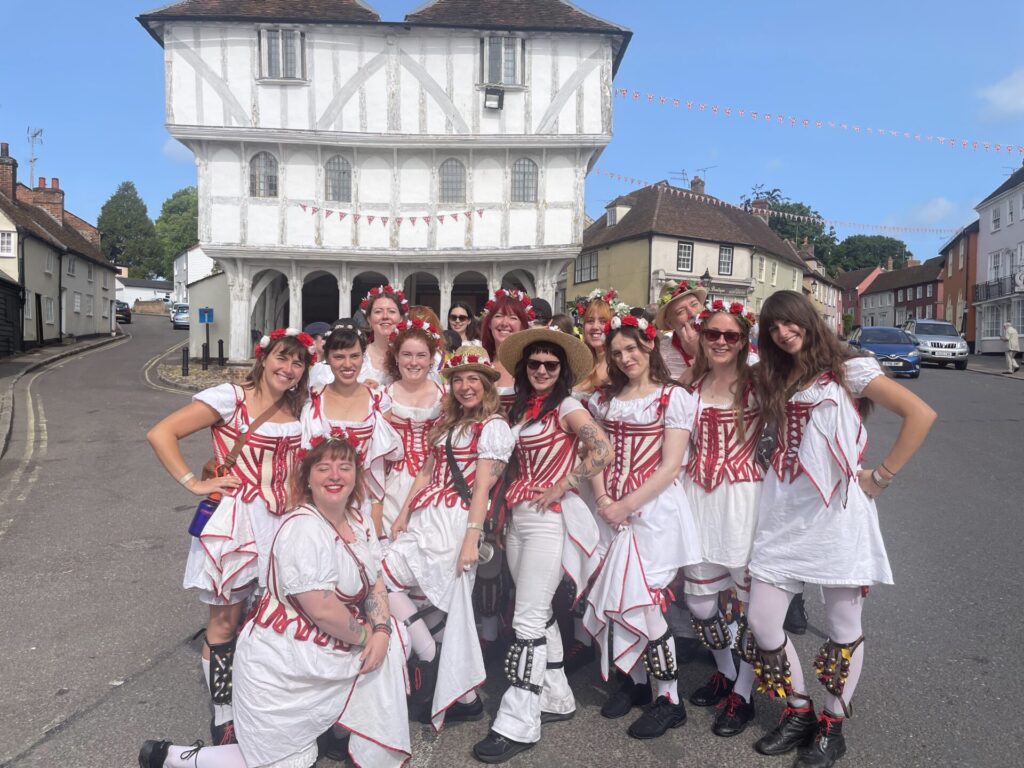
“I’d never seen women morris dancing. I had definitely never seen women morris dancing in small stripy corsets,” she recalls. “I was just overwhelmed with joy.” It was a moment that broke her preconception that morris dancing was only for old men wearing beards and bells. It took her several months to work up the courage to overcome further suspicions that The Belles might be parochial little Englanders, and join them for a practise. These concerns were quickly dissipated as soon as she met the group, and started to move. “I can’t explain the feeling of being in a dance for the first time,” she says. “It was incredible, it’s exhilarating, and fun and silly. I was completely hooked.”
Those initial reservations are not unusual, of course. Those ideas of morris dancers as stuffy and embarrassing real ale-swilling blokes are still common. And yet, perhaps even those who do conform to the stereotypes are simultaneously breaking myriad others. As Emily May points out, “to be a man wearing flowers and bells and waving hankies around, you’ve got to be pretty confident in yourself, and you’ve got to have quite progressive ideas about gender and performance,” she says. “I also don’t think that old men get enough fucking credit, to be honest. They’ve kept a lot of things alive that would have died if they hadn’t kept going when it was uncool.”
Women have long been integral to morris, too. In 1905 the suffragette Mary Neal, who had organised evening clubs to provide poor young women working in London’s factories with relief from their labour, wrote to Cecil Sharp asking if he might suggest songs and dances for them to learn, with Sharp in turn putting them in touch with William Kimber, the concertina player from that transformative Boxing Day six years earlier. Before long, Neal and her women were teaching morris to others across the nation, who in turn taught more. Tellingly, it led to a growing rift between the two. Sharp lamented a perceived lack of grace as the dances strayed further from the originals as they travelled down the chain of teaching and learning, while Neal decried Sharp’s argument as “the blighting touch of the pedant and the expert.” As the decades wore on, women found themselves excluded from morris altogether; when The Morris Ring was founded in 1934 it was only for men – a rule not changed until 2018. “People claimed that there were things about the physical structure of the female body, that they couldn’t leap in the same way, a lot of chat about centre of gravity,” Alex laughs, “but I think it was really that they only wanted to hang out with their boys. So at one point, being a female dancer was quite radical.” In recent years, however, there has been a major movement in the opposite direction; a 2023 census found that for the first time in history, morris dancers are more likely to be women than men.
The wider community as it stands today is an inclusive one, the Belles report. “We’ve made friends with male sides and had a great reaction, older guys coming up to us saying ‘we’re so glad you’re here’,” says Emily May. They have the space required for what is essentially just an excuse to socialise and connect in an age where such opportunities are scarce. “It’s really just a way to be in a girl gang, and to do exercise while drinking beer,” laughs Alex.

The same goes for another all-female side, Stroud’s Boss Morris, whose Lily Cheetham I speak to over the phone in a separate conversation. “It’s a group of mates who want to have a nice dance, then a fag and drink in the pub,” she says. Most of them come from creative backgrounds. Cheetham was taught patchwork by her grandmother who raised her, who in turn had learnt it from her father, while others are floristry artists, knitwear designers and more, and pay as much attention to these wider creative aspects as the dances themselves, often with reference to their direct surroundings. They’ve drawn inspiration from how the hills around Stroud were historically dotted with enormous chunks of red as military cloth manufactured there was left out to dry. This has continued into the town’s modern textile industry. “There’s a company here that makes all the fabric for snooker tables and tennis balls, so we’ve got a whole set of ponchos made of that bright yellow fabric – hot and itchy, but they look incredible.”
Then, there are the ‘beasts’, enormous creatures that some sides deploy to help dazzle their audiences. The Belles do the same with their aforementioned horse Betley, while for Boss Morris there is an enormous spooky owl, an intimidating bull and ‘Ewegenie’, a beloved giant sheep. Having recently received a rare injection of funding via the Ffern Folk Foundation, they’re now plotting new additions to the menagerie, perhaps inspired by endangered British insects. Perhaps the idea of a near extinct moth made so enormous, dancing in your face, is another form in which morris might be confrontational. “It’s a very small kind of grassroots action, but that thing tethers you,” says Cheetham.
In 2023, however, Boss Morris and their beasts were thrust under a much larger spotlight, recruited for that year’s BRIT Awards by fast-rising indie rockers Wet Leg for their performance of smash hit ‘Chaise Longue’. The band themselves were rooted amidst a thicket of grass, branches and ferns, flanked by the beasts who intermittently held up boards displaying the song’s lyrics, while the dancers were way out in front. If morris has the potential to transgress the expected, spread confusion and delight, here was that realised on the biggest stage possible. “The most unusual stage show I recall ever seeing, and yet, I couldn’t stop watching!!” reads one comment under a YouTube video of the performance with almost two million views. “I have no idea what I’m watching and I love it,” reads another. “The responses we had were amazing,” Cheetham continues. “Some people were really moved by seeing an English folk dance on national TV.”
Perhaps one reason it felt so strange to see morris dancing on television is because it sits so far outside of the establishment. Whereas ballet, for instance, has entire schools and national companies that have cemented its highbrow status, in morris there is no such thing. “It’s more just embedded in the national psyche,” says Cheetham. “I like that, because it means it’s designed to be on the street and danced by everyday people, and the aesthetic is all very lo-fi and makeshift.” When placed on a stage like that of the BRIT awards that’s anything but lo-fi, the juxtaposition has a transgressive quality, all that surface level polish disintegrating as something far deeper, messier and human takes over.
That’s not to say, of course, that morris does not also require skill and dedication. When it comes to the nuts and bolts of the dances themselves, it’s worth stressing how much Boss Morris do know their stuff. They’re wary too about striking the correct balance between tradition and subversion. They believe that morris dancing has to be fun. Getting too wrapped up in tradition stops the dancing speaking for the contemporary moment – which is what it was always intended to do.
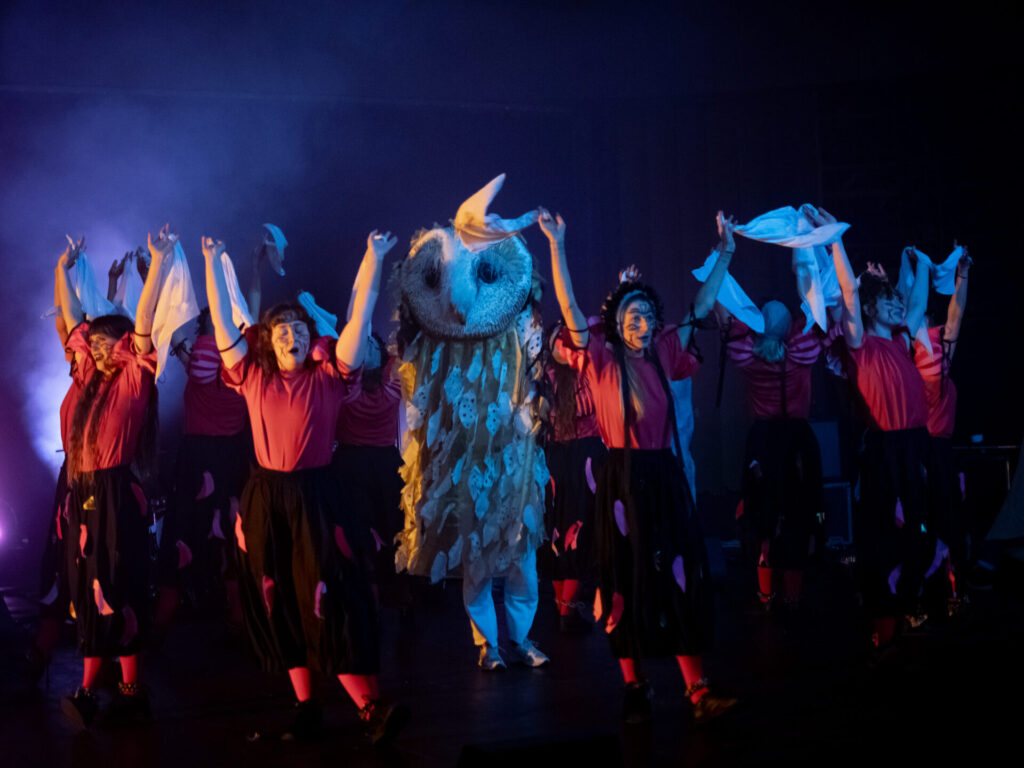
Boss Morris’ rising status has also come with increased scrutiny. They are often asked about big ideas – what it is to be English and more problematic aspects of the history of the folk canon. It requires them to take utmost care with every aspect. When looking for inspiration for their costumes, they have to consider issues around appropriation. When they put out information, they ensure it sounds inclusive and accessible. On their website, for instance, Boss Morris make it clear that they are ‘actively rejecting themes of nationalistic values.’
Perhaps the most contentious issue in contemporary morris is the continued use of blackface by a small minority of sides. In 2020, in response to calls by the cross-county Joint Morris Organisations for all dancers to eliminate the practise, the Hook Eagle Morris Men changed their face paint from black to blue, but claimed that rather than being racist, the practise dated back to farm labourers disguising themselves with soot in the 1400s, so they could beg without being identified. Others, however, have pointed out that while the earliest references to morris dancing date back to the 13th century, it is not until the 1800s that blackened faces were mentioned. “It literally came in with the popularity of minstrel shows,” Alex says, pointing out that those who continue to use blackface today are now banned from all three major morris organisations.
Emily May acknowledges that the history of morris more widely is full of uncertainties. “But when it’s something as charged as painting your face black? Get fucking real. I don’t want to have any association with that, and it upsets me that I have to deal with that as part of my hobby.” There was even a point where the Belles and several other sides had photographs stolen and used by a right-wing group. It requires them to “be super clear where we’re positioned,” says Alex, “even though we’re not specifically a political organisation. We know that there are responsibilities that come with the fact that England is a colonial, imperial power.”
The flipside to morris’ lack of historical specificity is that it can just as easily be wielded for that progressive message by leaning into its weirdness, or the way that its flamboyance can subvert gender stereotypes, for instance. “There was a video last year that went slightly viral of the Saddleworth Rushcart – this huge 20-foot-tall cart which a Saddleworth Morris man is sitting on top of, with 100-plus morris dancers pulling it up a hill singing ‘Jerusalem’ – which to me is a nice view of England as a socialist paradise. Honestly, the confusion from the right wingers in the comments. They couldn’t decide if they loved it or if they thought it was gay. They were like, ‘Oh yeah, England… hang on, are those men wearing fucking flowers?!”
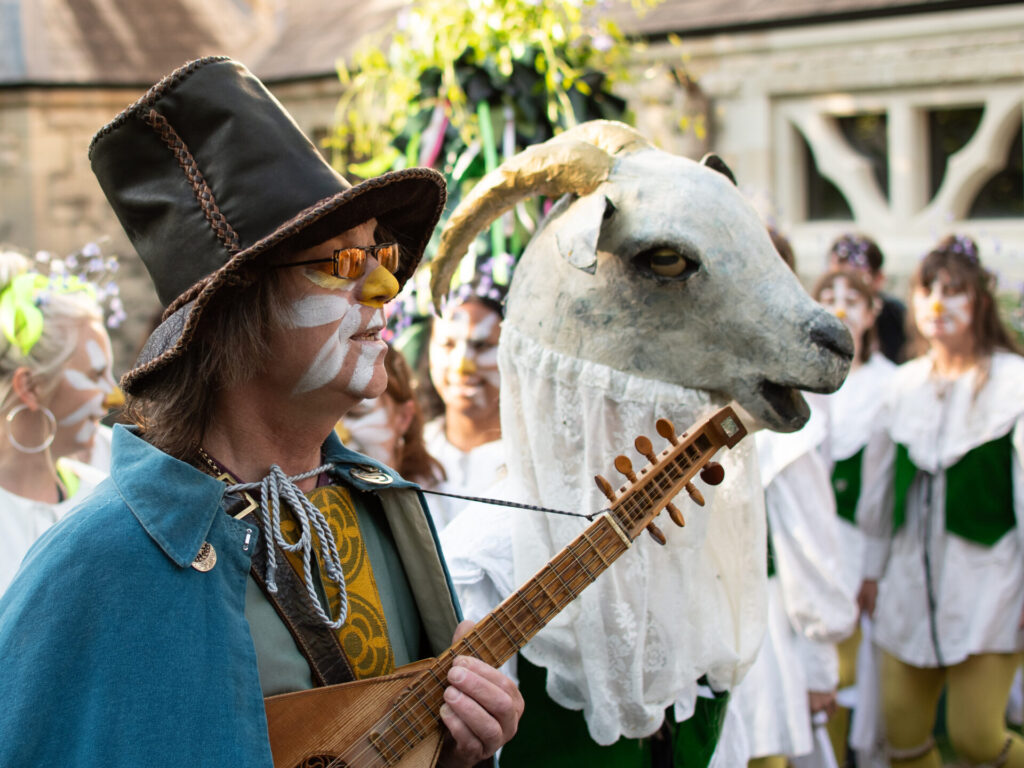
Given that morris is essentially the English national folk dance, it’s interesting that it can still feel so alien to the general public. The Belles recall being asked by a tourist what country they were from when performing in central London. “I think it says something about English culture and how much it’s valued,” says Alex. “It makes me think of how the Tories gave nothing to the EFDSS, and how if they really loved England as much as they say they do, it would be a national institution.” Adds Emily May: “Conservatives don’t actually like English culture. They don’t care about it.”
The Belles, however, are more than happy to operate outside of the establishment. Because it is not ‘judged’ in the same way that more mainstream art forms are, it also sits outside the constraints of consumer culture too. “For me, the point of folk culture is that it’s participatory. It’s the thing that we do to create our own entertainment,” says Alex. “I think what we want people to get when they see us, ‘you can do this too. You don’t even have to be good at it!’” Perhaps, then, it’s exactly this that gives morris that radical power that I found so thrilling at Green Man all those years ago, that Emily May did in Thaxted, or perhaps even that Sharp did, almost 126 years ago – the message of radical inclusion.

